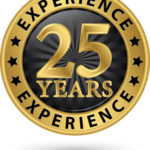On the one hand the surface of magnet material is treated to achieve protection, on the other hand for ideal visual applications. There are two main kinds of coating, the organic and the metallic covering.
Organic coating is, for instance, KTL coating (cathodic dip) like epoxy. Metallic coating among others is NiCuNi-coating (Nickel-Copper-Nickel).
Depending on application and joining process the coating can be chosen individually from a wide range of different coating possibilities.
PASSIVATION
Our in-house developed passivations are differing significantly from conventional phosphating. They have been developed to remove and prevent corrosion from accumulating after magnet treatment, so that surface is stabilized and protected against external corrosive influences. This is not a classical coating, but immersion bath method. Primarily applicable for transport and storage and as a basis for further coating like for applications where magnets are encapsulated/bandaged or used at non-critical locations.
PASSAL®
In combination with our passivation (PASSAL®) Aluminum pigmented spray coating achieves excellent properties against galvanic and contact corrosion.
Depending on geometry and corrosion specification the component parts are coated in single or multiple way by tumbling technique. A special process following this tumbling process condenses the surface. This coating is used for extreme operating and conditions and is considered as the most resistant one against salt spray test! This proven method in the fields of aeronautics and aerospace industry is suitable for sterilazable motors, motors and generators in the Off-Shore-Sector and for applications with aggressive media. Compared to the mass-enabled coating processes this implemented process steps are partly requiring manual steps, which lead to higher cost.
Galvanic Nickel (NiCuNi)
A very popular coating for sintered NdFeB magnets is the nickel plating. This is applied in multilayered way. Nowadays a 3-layer coating is customary consisting of nickel base coat, copper and finally 2nd Ni-coating as top-layer. The benefits of Ni-coating include the surface hardness, the cost-effective production and a good stability in humid environment and at high temperature. Disadvantageously here are the bad dosing of the separate coatings, a problematic gluability and the loss of magnetic flow due to short-circuit, which arises by nickel plating.
Chemical Nickel (NiCuNi)
This process is similar to the galvanic coating. However, here the last Ni-layer is applied chemically. This offers higher protection against corrosion under demanding conditions of sterilization, less loss of magnetic flow and improved adhesive properties. Due to the expensive process management this kind of coating is used relatively rarely.
Galvanic Nickel-Tin (NiCuSn)
For many applications in humid environment and especially where higher adhesive properties are required and necessary, this cost-effective kind of coating is suitable. Disadvantageously here are the low hardness of the last tin-layer , which complicates the handling, especially in case of magnetizes parts. At the same time, however, the loss of magnetic flow is reduced significantly.
Epoxy (KTL)
Our epoxy-coating is a cathodic dip-paint coat (KTL). Contrary to the epoxy spray-coating and NiCu-Epoxy coating our KTL-coating distinguishes by special stability in humid media, in contact with weak acids as well as alkaline liquids and saline solutions. This properties are making this coating so special and attractive for applications in tidal power stations and for Offshore – Windgenerators. Moreover the KTL-coating offers significant better stall-characteristics at glue-shear tests and supplies an electric isolating coating-layer between the metal parts.
Nickel-Copper-Epoxy (NiCuEpoxy)
In addition to the mere epoxy-coating we are able to offer the possibility of a Nickel-Copper-Epoxy (NiCuEpoxy) coating. This coating alternative is a bit softer compared to the conventional NiCuNi-coating, but scores with improved adhesive properties.

 Deutsch
Deutsch


